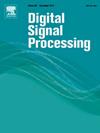DuINet:用于增强图像去噪的信息交换和感知损失双分支网络
IF 2.9
3区 工程技术
Q2 ENGINEERING, ELECTRICAL & ELECTRONIC
引用次数: 0
摘要
图像去噪是图像处理和底层计算机视觉中的一项基本任务,通常需要在去除噪声和保留精细细节之间取得微妙的平衡。近年来,深度学习方法,特别是那些利用各种神经网络架构的方法,在应对这一挑战方面显示出了巨大的潜力。在本研究中,我们提出了一种新颖的双分支网络 DuINet,专门用于捕捉图像信息的互补方面。DuINet 集成了一个信息交换模块,可促进各分支之间有效的特征共享,同时还集成了一个感知损失函数,旨在提高去噪图像的视觉质量。广泛的实验结果表明,DuINet 超越了现有的双分支模型和几种最先进的基于卷积神经网络(CNN)的方法,尤其是在保留精细细节和纹理至关重要的严重噪声条件下。此外,与 Restormer 和 MIRNet 等更深层次或更大型的网络相比,DuINet 在 LPIPS 指数方面保持了极具竞争力的性能,突出表明它有能力为去噪图像提供高质量的视觉效果。本文章由计算机程序翻译,如有差异,请以英文原文为准。
DuINet: A dual-branch network with information exchange and perceptual loss for enhanced image denoising
Image denoising is a fundamental task in image processing and low-level computer vision, often necessitating a delicate balance between noise removal and the preservation of fine details. In recent years, deep learning approaches, particularly those utilizing various neural network architectures, have shown significant promise in addressing this challenge. In this study, we propose DuINet, a novel dual-branch network specifically designed to capture complementary aspects of image information. DuINet integrates an information exchange module that facilitates effective feature sharing between the branches, and it incorporates a perceptual loss function aimed at enhancing the visual quality of the denoised images. Extensive experimental results demonstrate that DuINet surpasses existing dual-branch models and several state-of-the-art convolutional neural network (CNN)-based methods, particularly under conditions of severe noise where preserving fine details and textures is critical. Moreover, DuINet maintains competitive performance in terms of the LPIPS index when compared to deeper or larger networks such as Restormer and MIRNet, underscoring its ability to deliver high visual quality in denoised images.
求助全文
通过发布文献求助,成功后即可免费获取论文全文。
去求助
来源期刊

Digital Signal Processing
工程技术-工程:电子与电气
CiteScore
5.30
自引率
17.20%
发文量
435
审稿时长
66 days
期刊介绍:
Digital Signal Processing: A Review Journal is one of the oldest and most established journals in the field of signal processing yet it aims to be the most innovative. The Journal invites top quality research articles at the frontiers of research in all aspects of signal processing. Our objective is to provide a platform for the publication of ground-breaking research in signal processing with both academic and industrial appeal.
The journal has a special emphasis on statistical signal processing methodology such as Bayesian signal processing, and encourages articles on emerging applications of signal processing such as:
• big data• machine learning• internet of things• information security• systems biology and computational biology,• financial time series analysis,• autonomous vehicles,• quantum computing,• neuromorphic engineering,• human-computer interaction and intelligent user interfaces,• environmental signal processing,• geophysical signal processing including seismic signal processing,• chemioinformatics and bioinformatics,• audio, visual and performance arts,• disaster management and prevention,• renewable energy,
 求助内容:
求助内容: 应助结果提醒方式:
应助结果提醒方式:


